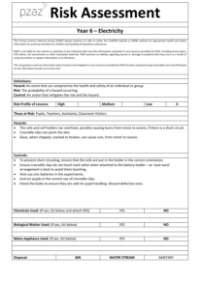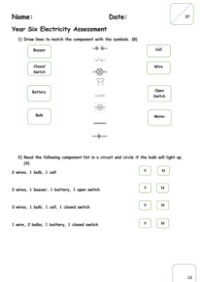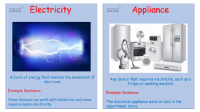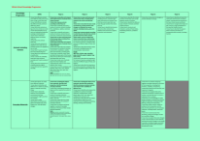Electricity - Answers
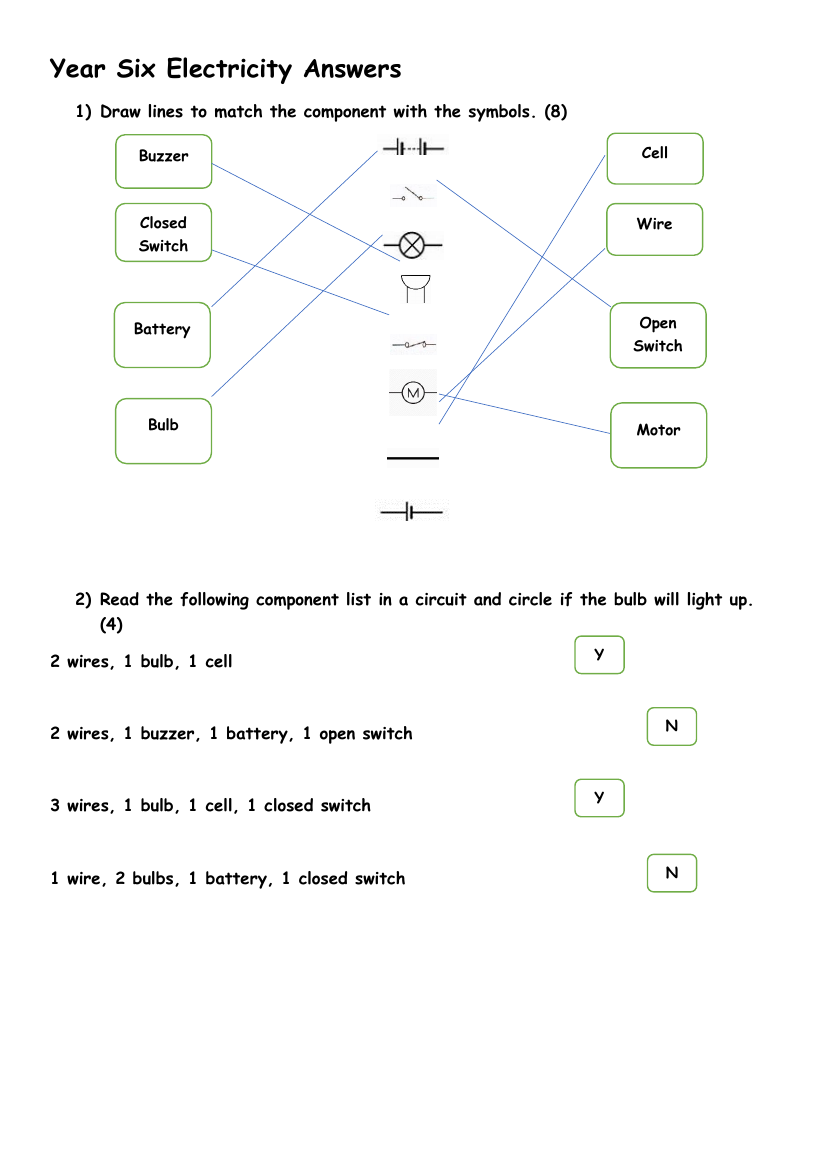
Science Resource Description
In the "Year Six Electricity Answers" sheet, students are presented with various tasks to assess their understanding of electrical circuits and components. The first task requires matching electrical components with their corresponding symbols, an essential skill for interpreting circuit diagrams. The second task involves reading a list of components in a circuit and determining whether or not a bulb will light up. Students must circle 'Y' for yes or 'N' for no based on the configuration of elements such as wires, cells, and switches. The correct responses indicate that a closed circuit is necessary for the bulb to illuminate.
Further tasks include drawing a circuit with specified components, such as two bulbs, wires, a buzzer, and a cell, and determining the number of wires needed to complete it. The answer provided is four wires. Students are also asked to list components and their quantities for a given circuit, and to explain why a bulb might not be lit in a particular setup, with the solution being to close an open switch to complete the circuit. The worksheet includes a results table from an experiment conducted by Ahmed and Libby, which investigates the effect of the number of cells on the speed of a motor. Students are asked to identify anomalies in the results, suggest repeat readings to verify results, and understand the independent variables in the investigation. Ahmed and Libby's conclusion from the experiment is that the number of cells affects motor speed, and the number of motors inversely affects their speed. Lastly, students are encouraged to propose additional investigations, such as exploring the impact of the number of cells on the brightness of a bulb or the loudness of a buzzer.


